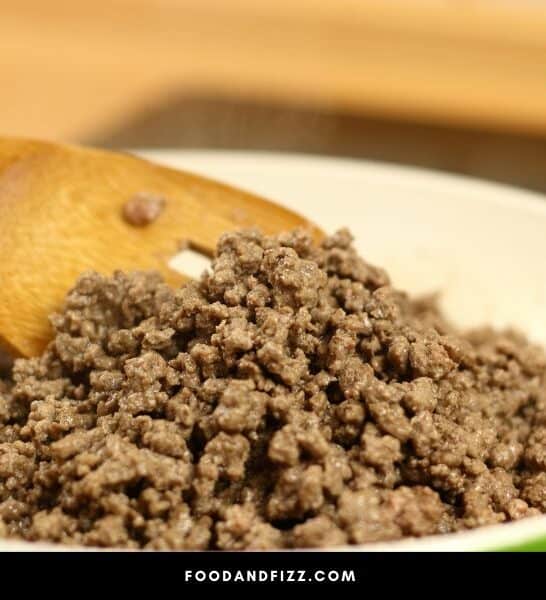Ground beef is cow meat that has been finely chopped into tiny pieces using a grinder, mincer, or knife. Traditionally, ground beef has been used in numerous recipes, including Thai Basil Beef, Hamburger Stew, Taco Pizza, Crock-Pot Taco Meat, Cheeseburger Casserole, etc.
Ground beef adds taste, texture, and a pleasant odor to most delicacies. That makes it one of the most significant ingredients for most meals, whether meant for breakfast, lunch, dinner, or a snack.
Is It Normal When Ground Beef Turns Brown In The Fridge? Still Safe To Eat?
Turning brownish is a normal thing from refrigerated ground beef. That happens due to the oxidation process, effect following exposure of the meat to oxygen in the air. When ground beef is exposed to oxygen, myoglobin experiences a chemical change leading to the darkening of the meat, which then turns brownish. Therefore, being a normal thing for refrigerated ground beef to turn brownish, it is then safe to eat.
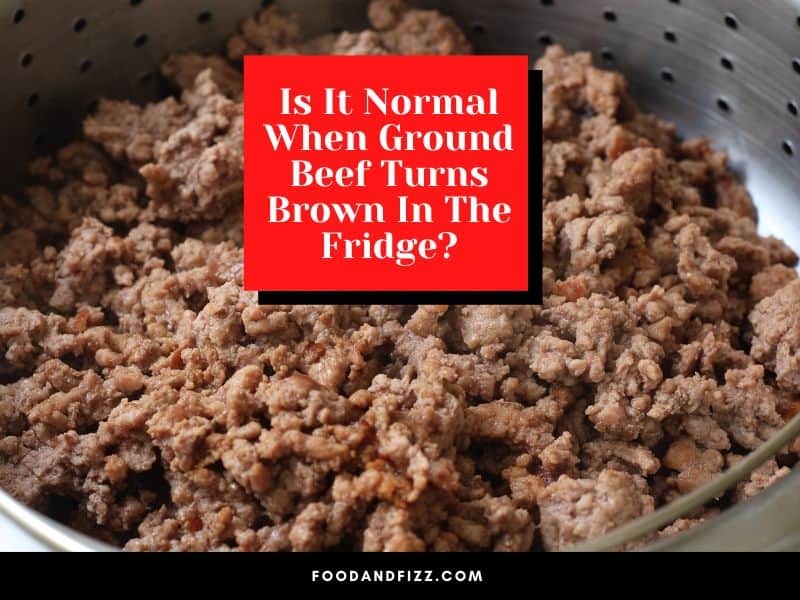
How Long Does Refrigerated Ground Beef Take Before Turning Brown?
Different conditions determine how long ground beef can take before turning brown, even after refrigeration. In some cases, it takes a day or two before the meat can turn brownish. In other instances, browning can appear earlier or later.
Why Does Ground Beef Turn Brownish on the Outside?
Ground beef browning on the outside is a chemical process that triggers the browning effect. The word chemical, in this case, means the change is irreversible. When meat, especially beef, is exposed to oxygen, an oxidation process occurs, leading to a change in color.
Besides, grounded beef has increased surface area, thus making oxidation faster. With that, the browning will appear quicker than for the ungrounded beef.
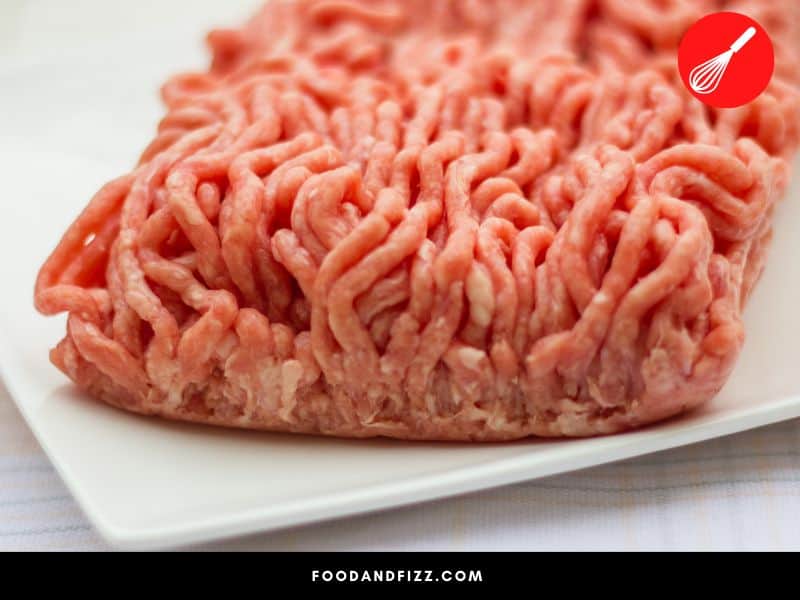
Is Ground Beef Browning Always a Safe Thing?
While browning is normal for refrigerated ground beef and always safe, the color change could sometimes mean the meat is spoilt.
Therefore, it would be advisable to look for different indicators to determine whether the meat is safe to eat. Areas of concern for this should include black spots, awful smells, slippery texture, and molds.
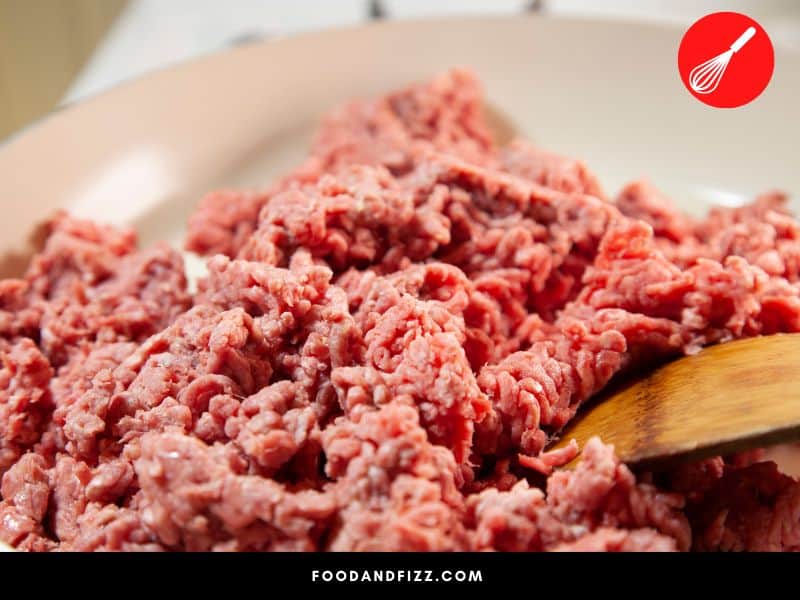
When Can Ground Beef Browning Mean It Has Spoilt?
Besides a color change, here are several other indicators to consider in determining whether ground beef is spoilt or safe to eat.
- Black spots: The appearance of black spots on the meat indicates that harmful bacteria are already acting on the beef.
- Awful Odor: The emergence of a bad smell indicates the rotting process has commenced, making the consumption of ground beef unsafe.
- Molds Appearance: It is one of the sure reasons to tell that ground beef is spoiled. If you notice the appearance of the molds, it is time to throw away the ground beef.
- Slippery Texture: If the touch of your ground beef feels slippery, that’s because the bacteria are already acting on the meat. The bacterial activity produces a sticky liquid that makes the beef sticky.
- Taste: This comes last because you might have noted the ground beef is spoilt long before you got to the eating part. Nevertheless, if the meat tastes awful or rotten, discard the beef as it is already spoilt.
What are the Dangers of Consuming Spoilt Ground Beef?
Eating spoilt ground beef could lead to several health hazards. The severity depends on the extent to which the meat was spoilt and the amount consumed. Some of the most likely health complications one could develop following consumption of spoilt ground beef include;
- Abdominal Cramps: It is a pain in the stomach. It could begin as a lesser pain before becoming more severe.
- Fever: It is a temporary but very uncomfortable rise in body temperature accompanied by shivering.
- Bloody Stools: It is the appearance of blood spots in the excretion.
- Diarrhea: It is a loss of body water instigated by frequent bowel movements and liquefied stool.
- Dehydration: Constant diarrhea leads to loss of body water, which means there will not be enough water in the body for other bodily functions.
- Nausea and Vomiting: Consuming ground beef could lead one to want to throw up or even throw up.
- Headaches: If the food poisoning is too severe, then there is a possibility that you could have painful migraine.

What Should I Do If I Consume Spoilt Ground Beef?
If you have eaten spoilt ground beef and the signs have begun to show up, drinking a lot of water to compensate for dehydration is advisable.
Nevertheless, it would be best if you still saw a doctor for detailed treatment to help you fight the effects of food poisoning. Please do not attempt self-medication, as it could be disastrous.
Does Cooked Ground Beef Turn Brownish?
If the ground beef hadn’t turned brown before cooking, then it will during the cooking process, which is a normal thing. To tell whether cooked ground beef is spoilt or not, you can use the same measures as explained above.
They include taste, texture, smell, color change, molds, and appearance of black spots. If any of the signs indicate spoilage, you should discard the meat. Otherwise, consuming it could be dangerous, leading to food poisoning.
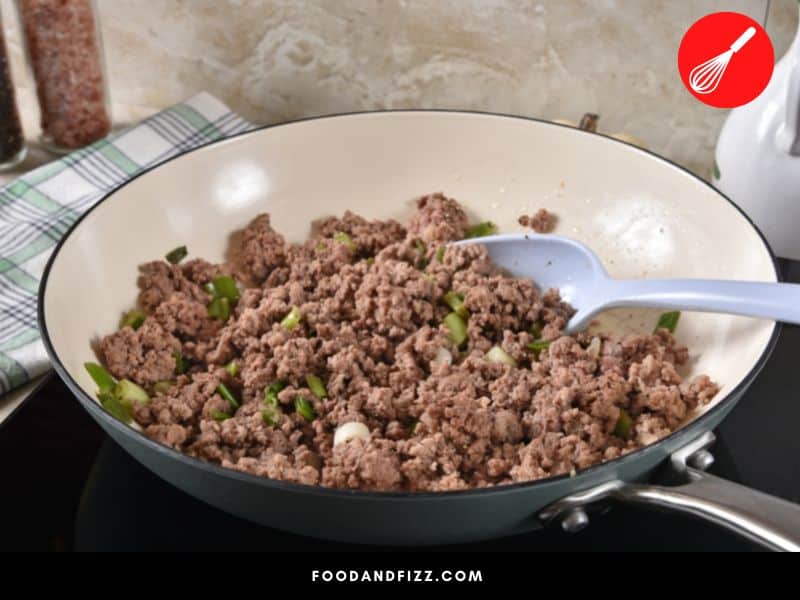
How Long Can Ground Beef Stay Safe When Refrigerated?
Ground beef could last for up to four months when in the freezer. Otherwise, it should be eaten within five days if placed in the normal fridge compartments. However, all these do not work if it has reached the expiry date.
Frequently Asked Questions to Is It Normal When Ground Beef Turns Brown In The Fridge?
Can I Eat Refrigerated Ground Beef That Has Turned brown?
It is normal for refrigerated ground beef to turn brown. As such, there would be no bodily harm in consuming it.
How Can I Tell Ground Beef is Spoilt?
You can know ground beef has gone bad by an awful smell, slippery texture, horrible taste, black spots, molds, and color change. If either of the signs is noted, discard the ground beef.
What Should I Do After Consuming Spoilt Ground Beef?
Begin by drinking fresh and clean water, and later visit a doctor. Avoid self-medication, as it could do more harm than good.
Conclusion to Is It Normal When Ground Beef Turns Brown In The Fridge
Ground beef turning brown in the fridge is a normal result of oxidation, or of the beef being exposed to oxygen.
When exposed to the air, the myoglobin in the meat undergoes a chemical process that turns the color of meat from a reddish and pinkish hue to a brown color. The meat is safe to eat, but it also means that it is not as fresh as meat that has a reddish hue.

